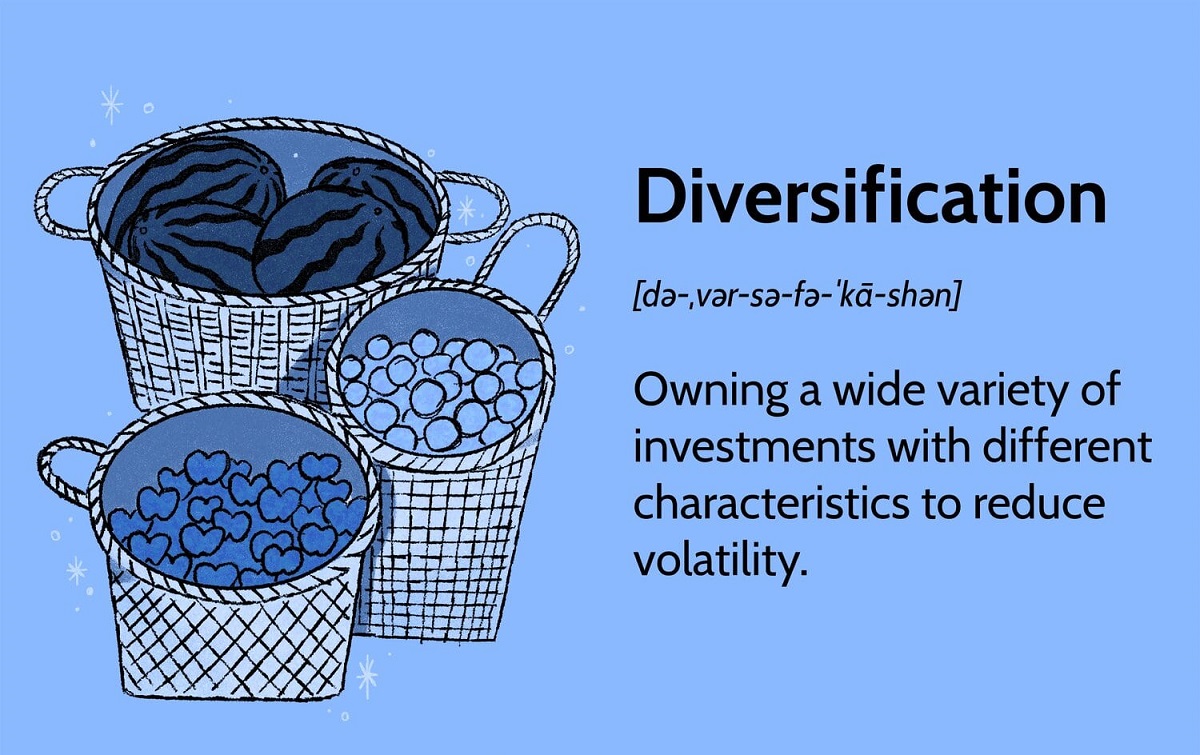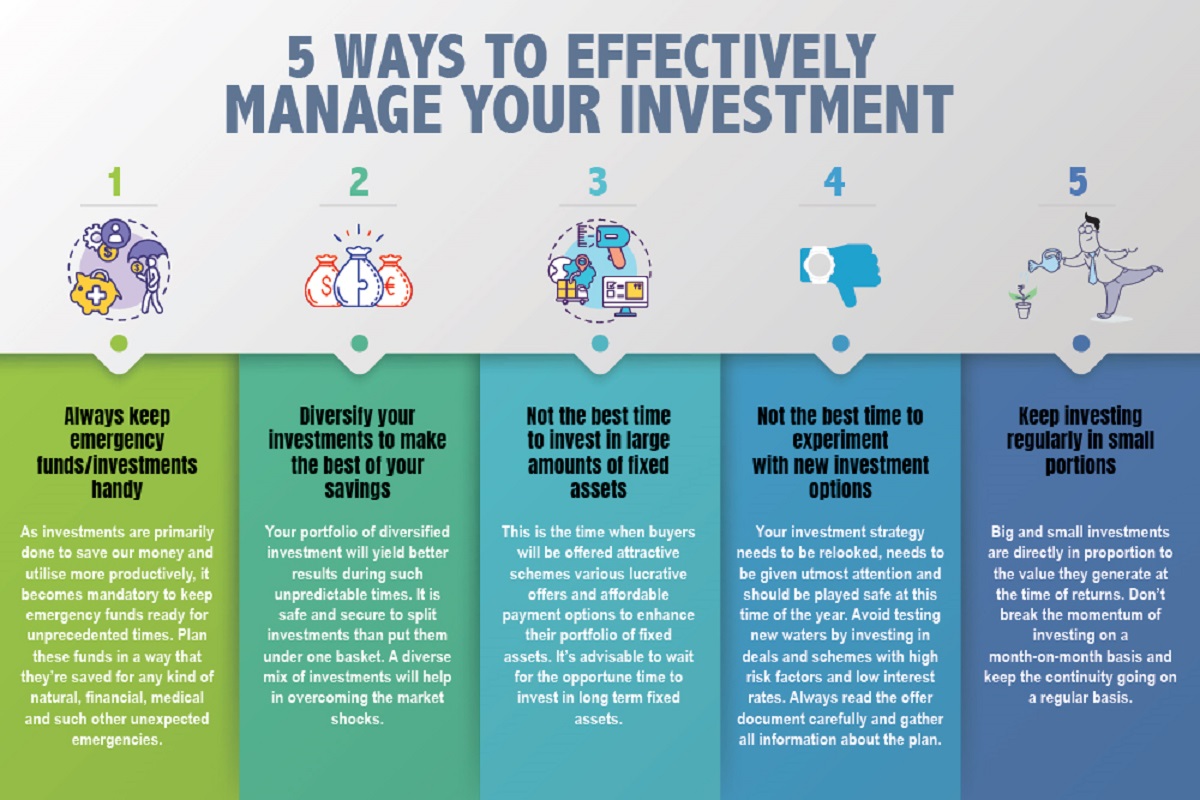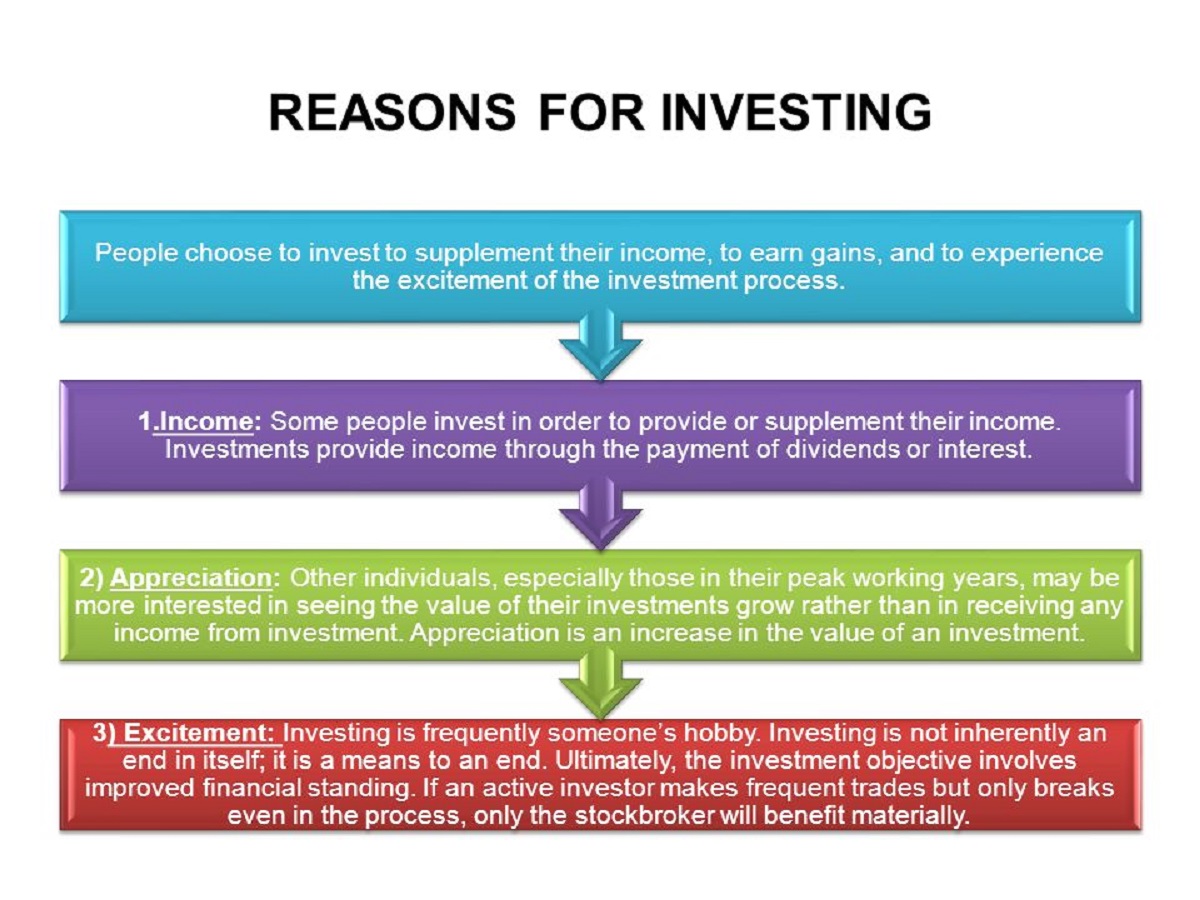Introduction:
When it comes to investing, one commonly heard phrase is “Don’t put all your eggs in one basket.” This simple yet powerful statement encapsulates the importance of diversification in investment strategies. Diversifying your investments involves spreading your capital across different asset classes, industries, and geographical locations to minimize risk and maximize potential returns.
Investors have long recognized the significance of diversification as a key principle in managing their portfolios. By allocating their funds across a variety of investment options, they aim to reduce the impact of individual asset failures or market downturns on their overall wealth. In this article, we will explore why diversification is a prudent approach for investors and why it has become a fundamental principle in finance.
While it is easy to understand how diversification works at a conceptual level, it is crucial to comprehend the underlying reasons that drive individuals to adopt this strategy. By diversifying their investments, individuals seek to achieve several key objectives, such as risk mitigation, increased potential for return, preservation of capital, and access to different asset classes.
In the following sections, we will delve deeper into these reasons and explore the numerous advantages of diversifying one’s investment portfolio. Whether you are a seasoned investor or just starting out, understanding the benefits of diversification can help you make informed decisions to protect and grow your wealth.
Risk Mitigation:
One of the primary reasons individuals choose to diversify their investments is to mitigate risk. By spreading their capital across different asset classes, investors can reduce the impact of adverse events or downturns in any single investment.
Investing solely in a single asset or industry can be risky. If that particular investment suffers from poor performance, economic downturns, or company-specific issues, the investor could face significant losses. However, by diversifying across various assets such as stocks, bonds, real estate, and commodities, investors can spread their risk and reduce the potential impact of any individual investment’s negative outcomes.
For example, let’s say an investor has a portfolio that is solely comprised of stocks in the technology sector. If the technology industry experiences a downturn, the investor’s entire portfolio could suffer substantial losses. However, if the investor had diversified their portfolio by also including investments in other sectors such as healthcare, utilities, or consumer goods, they would have reduced their exposure to the risk associated with a sole reliance on technology stocks.
Furthermore, diversification can also help mitigate the risk associated with individual company failures. Even if a single company in a diversified portfolio faces financial distress or bankruptcy, the impact on the overall portfolio will be limited since the investments are spread across multiple companies and industries.
By spreading investment risk, diversification enables investors to achieve a more stable and balanced portfolio. While it does not eliminate the possibility of losses or market volatility, it aims to soften the blow by ensuring that the impact on overall wealth is minimized. Through risk mitigation, diversification provides an essential layer of protection for investors, allowing them to navigate through uncertain economic conditions and financial market fluctuations with greater confidence.
Increased Potential for Return:
Another significant reason individuals choose to diversify their investments is to enhance their potential for return. While the primary goal of diversification is to mitigate risk, it also offers the potential for increased gains.
Investments come with varying levels of risk and return. Some assets, such as stocks, have higher volatility but also offer the potential for greater returns over the long term. On the other hand, bonds and cash equivalents are generally considered less risky but offer lower potential returns. By diversifying across different asset classes and investment vehicles, investors can balance the risk and reward trade-off in their portfolio.
Diversification can help capture the upside potential of different investments, even if some individual assets underperform. For example, let’s say an investor diversified their portfolio by including stocks from various sectors, bonds, and real estate. If the stock market experiences a downturn, the investor may still benefit from the stability and income generated by the bonds and real estate holdings. In this scenario, while the investor may experience losses on their stock investments, the overall impact on their portfolio will be mitigated, potentially allowing them to recover from the loss faster and take advantage of future market upswings.
By spreading investments across different asset classes that have low correlations with each other, investors can increase the likelihood of capturing positive returns from at least some of the investments in their portfolio, even if others may be underperforming. This diversification of investments can provide a more balanced risk-return profile and potentially enhance the overall return on investment over the long run.
It’s important to note that diversification does not guarantee higher returns, and investment performance is still influenced by market conditions and individual asset performance. However, by diversifying their investments, individuals can position themselves to potentially benefit from a variety of opportunities, increase the overall potential returns, and achieve a better risk-adjusted return on their investment portfolio.
Preservation of Capital:
Preserving capital is a crucial consideration for investors, and diversification plays a vital role in achieving this objective. By diversifying their investments, individuals aim to protect their wealth from significant losses and preserve their capital over the long term.
Investing in a single asset or a concentrated portfolio can be risky, as the performance of that specific investment can have a significant impact on the investor’s capital. If the chosen investment performs poorly or faces adverse circumstances, there is a high risk of losing a substantial portion of the invested capital.
However, by diversifying investments across a range of different assets, such as stocks, bonds, real estate, and commodities, investors can reduce the risk of losing a significant portion of their capital. Even if one or more investments underperform, the overall impact on the portfolio’s value is likely to be less severe.
For example, during times of economic recession, stocks may experience a sharp decline in value. However, other asset classes such as bonds or gold may perform better or even offer a safe haven for capital during uncertain times. By allocating a portion of the investment portfolio to these different asset classes, investors can mitigate the risk of capital erosion and ensure a more stable investment environment.
Diversification also helps guard against specific risks associated with individual assets or industries. For instance, if an investor holds a concentrated position in a single company, they are vulnerable to any negative events or challenges that may arise for that particular company. By diversifying and spreading investments across multiple stocks and sectors, investors can significantly reduce the risk of losing a substantial portion of their capital due to the poor performance of any individual investment.
By preserving capital through diversification, investors can maintain the value of their investments over time and have greater stability in their portfolios. This allows them to weather market volatility, economic downturns, and unexpected events while maintaining a solid foundation of wealth.
Access to Different Asset Classes:
Diversifying investments provides individuals with the opportunity to access a wide range of asset classes, each offering unique characteristics and potential returns. By diversifying across different asset classes, investors can broaden their investment horizons and tap into various market opportunities.
Asset classes refer to different categories of investments, such as stocks, bonds, real estate, commodities, and cash. Each asset class behaves differently based on factors such as market conditions, economic cycles, and investor sentiment. By investing in a variety of asset classes, individuals can potentially benefit from the strengths and advantages of each.
For example, stocks are considered to have higher growth potential but also come with higher volatility. Bonds, on the other hand, are known for their income-generating capabilities and relatively lower risk. Real estate can provide stable cash flow and potential appreciation over time. By diversifying across these various asset classes, investors can gain exposure to different market dynamics and potentially mitigate the risks associated with any single investment type.
Access to different asset classes enables investors to create a well-rounded portfolio that aligns with their financial goals, risk tolerance, and investment preferences. It allows them to allocate their capital strategically and take advantage of opportunities in different sectors and markets.
Moreover, investing in different asset classes can offer potential benefits in terms of income generation, capital appreciation, and risk diversification. For instance, a portfolio that includes dividend-paying stocks, high-quality bonds, and income-generating real estate can provide a steady stream of cash flow that helps support financial goals and maintain stability, even during periods of market volatility.
Furthermore, different asset classes may have varying levels of correlation with one another. This means that they can respond differently to market events. By diversifying across asset classes with low correlation, investors can potentially reduce the overall volatility of their portfolio and increase the stability of their returns.
Overall, diversifying investments across different asset classes allows individuals to access a broader range of investment opportunities, balance risk and return considerations, and potentially achieve a more resilient portfolio with the potential for diversified and consistent growth.
Protection Against Market Volatility:
Market volatility, characterized by frequent price fluctuations and uncertainty, is an inherent aspect of investing. However, diversification offers a means of protection against market volatility by spreading investments across different asset classes, sectors, and geographic regions.
When the market experiences periods of turbulence or downturns, the performance of individual investments may be negatively impacted. However, a properly diversified portfolio can help mitigate the effects of market volatility, reducing potential losses and providing a buffer against the adverse impact of a single investment’s poor performance.
By diversifying across different asset classes, investors can include investments that tend to behave differently in response to market conditions. For instance, during a bear market, when stocks may decline, other assets such as bonds or commodities may perform relatively better or remain stable. As a result, the overall impact of the market downturn on the portfolio is reduced.
Moreover, diversification through geographic allocation can safeguard against the volatility of any single market. Investing in various regions or countries can help mitigate the risks associated with localized economic downturns, political instability, or regulatory changes that may impact specific markets.
In addition to asset class and geographical diversification, sector diversification is also crucial. Different sectors of the economy can perform differently in response to various factors such as economic cycles, technological advancements, or regulatory changes. By spreading investments across sectors such as technology, healthcare, finance, and consumer goods, investors can reduce the impact of sector-specific risks and promote stability in their portfolios.
During times of market volatility, diversified portfolios tend to be more resilient and can provide a smoother investment experience. While the overall value of the portfolio may still fluctuate, diversification helps to limit the downside and provides a greater chance for recovery when market conditions improve.
It is important to note that diversification does not provide complete immunity against market volatility, and there is always the possibility of experiencing losses. However, by diversifying investments, individuals can potentially mitigate the impact of volatility and create a more balanced and stable portfolio that is better positioned to weather market uncertainties.
Opportunity for Wealth Creation:
Diversifying investments not only helps protect and preserve capital but also provides individuals with the opportunity for wealth creation. By allocating funds across different asset classes, sectors, and geographical regions, investors can tap into various growth opportunities and potentially maximize their overall investment returns.
Each asset class and industry has its unique potential for generating wealth. For instance, stocks have historically demonstrated the potential for long-term capital appreciation. Bonds can offer stable income and potential capital gains. Real estate investments can appreciate in value while providing rental income. By diversifying across these different asset classes, investors can take advantage of the growth potential offered by each.
Furthermore, diversification can help investors capitalize on specific market trends and emerging opportunities. For example, if a particular sector or region is experiencing rapid growth, having investments spread across different sectors and regions allows investors to capture and benefit from these trends while diversifying their risk.
Additionally, diversification allows investors to participate in the growth potential of small and large companies alike. By owning a diverse range of stocks, investors can access both established companies with stable growth prospects and smaller, high-potential companies that may offer significant returns. This diversity of investments can provide a balanced approach to wealth creation, allowing investors to benefit from both established and emerging opportunities.
Furthermore, diversification can also help investors avoid the potential negative impact of concentrated investments. Investing a significant portion of capital in one particular investment can be risky as the success of that investment is dependent on its individual performance. Diversifying across various investments reduces dependence on any single investment and spreads the risk across multiple opportunities, increasing the likelihood of wealth creation in the long term.
It’s essential to note that diversification does not guarantee wealth creation, and investment performance is subject to market conditions and individual investment outcomes. However, by diversifying their investments, individuals can position themselves to take advantage of diverse growth opportunities, potentially maximize their investment returns, and increase their chances of generating wealth over time.
Decreased Dependency on a Single Investment:
One of the fundamental principles of diversification is reducing dependency on a single investment. Relying heavily on a single investment exposes an investor to significant risks, as the success or failure of that investment can have a disproportionate impact on their overall financial well-being.
By diversifying their investments, individuals can spread their risk across multiple assets and decrease their dependency on any one investment. This approach helps to safeguard against the potential negative consequences of a single investment’s poor performance or unforeseen events that may affect its value.
For example, investing a large portion of capital in a single stock involves a substantial risk. If that particular stock experiences a significant decline in value due to unfavorable market conditions, poor financial performance, or industry-specific challenges, the investor’s entire portfolio could suffer severe losses. However, by diversifying across multiple stocks, bonds, real estate, and other asset classes, investors can dilute the impact of any one investment’s performance on their overall portfolio.
In addition to reducing the risk of losses, diversification also allows investors to capitalize on the potential upside of different investments. By spreading investments across multiple asset classes and industries, individuals can take advantage of various growth opportunities, increasing their chances of potentially benefiting from the success of multiple investments simultaneously.
Furthermore, diversification also helps protect against the risk of experiencing a financial catastrophe due to the failure of a single investment. In some unfortunate cases, investments may face unexpected challenges such as bankruptcies, fraud, or other unforeseen events that can lead to a complete loss of capital. However, by diversifying, investors can reduce their vulnerability to such risks and mitigate the potential consequences of any one investment failure.
By decreasing dependency on a single investment, diversification provides individuals with a sense of security and stability in their investment portfolios. It allows for a more balanced and resilient approach to investing, ensuring that the impact of any one investment’s performance is minimized, and the overall portfolio is better equipped to withstand unexpected market events or individual investment setbacks.
Hedging Against Inflation:
Inflation can erode the purchasing power of money over time, making it essential for investors to protect their wealth against its effects. Diversification can serve as a hedge against inflation by allocating investments across different asset classes that have historically shown the ability to withstand and even outpace inflationary pressures.
When inflation rises, the value of traditional cash holdings tends to decline. However, certain asset classes such as stocks, real estate, and commodities have historically shown the potential to generate returns that outpace inflation. By diversifying investments across these asset classes, investors can potentially benefit from their inflation-fighting characteristics.
Stocks, for example, have historically provided returns that outpace inflation over the long term. As companies adjust their prices to account for rising costs, their earnings and stock prices can rise, offering a potential hedge against inflation. Real estate investments, particularly in markets with robust rental demand, can provide rental income that has the potential to rise with inflation, while also offering the potential for price appreciation. Commodities such as precious metals, energy, and agricultural products have historically served as a store of value during periods of inflation, as their prices tend to rise as inflation increases.
In addition to these asset classes, inflation-protected securities such as Treasury Inflation-Protected Securities (TIPS) can also be included in a diversified portfolio. TIPS are specifically designed to provide protection against inflation by adjusting their principal value in line with changes in the Consumer Price Index (CPI). These securities provide investors with a fixed interest payment and a principal value that increases with inflation, providing a hedge against the erosion of purchasing power.
By diversifying across these various asset classes and securities, investors can potentially shield themselves from the negative impact of inflation. The different characteristics and abilities of these investments to potentially outpace inflation can provide a balanced approach to preserving purchasing power and maintaining the long-term value of the portfolio.
However, it is important to note that while diversification can help mitigate the impact of inflation, it does not eliminate the risk entirely, as investment performance is subject to market forces and other factors. Additionally, individual investors may have different inflation protection needs based on their unique financial circumstances and goals.
Overall, diversification across asset classes that historically have shown the potential to offer a hedge against inflation can help investors protect their wealth and maintain the purchasing power of their assets over the long term.
Diversification Across Industries and Sectors:
Diversifying investments across different industries and sectors is a crucial aspect of portfolio management. Investing in a wide range of industries can help spread risk, capture growth opportunities, and provide stability in the face of sector-specific challenges.
Industries and sectors can perform differently at various stages of the economic cycle, and their fortunes can be influenced by factors such as technological advancements, regulatory changes, and consumer trends. By diversifying across industries, individuals can reduce the impact of any single industry’s poor performance on their overall investment portfolio.
For example, during periods of economic downturn, sectors such as retail, travel, and hospitality may experience significant challenges. However, other sectors such as healthcare, utilities, or technology may remain relatively resilient. By diversifying investments across these sectors, individuals can potentially mitigate the risk associated with any one industry’s performance and maintain stability in their portfolio.
Furthermore, diversification across industries and sectors allows investors to tap into different growth opportunities. Industries go through cycles of innovation, expansion, and consolidation, and different sectors may experience periods of outperformance at different times. By being exposed to a diverse range of industries, individuals increase their chances of benefiting from the growth potential of various sectors.
Diversification across industries also promotes exposure to companies of different sizes and characteristics. For instance, companies in the technology sector tend to be fast-growing and highly innovative, while those in the healthcare sector may offer stability and long-term growth driven by demographic trends. By diversifying across sectors, investors can gain exposure to companies with differing risk profiles, potentially benefiting from a more balanced portfolio.
Moreover, diversification across industries can also help mitigate the impact of sector-specific risks. While certain industries may face unique challenges such as regulatory hurdles, changing consumer preferences, or disruptive technologies, diversification allows investors to spread their risk and avoid being overly exposed to any single industry’s volatility.
By diversifying across industries and sectors, investors can enhance their portfolio’s stability, minimize the impact of sector-specific risks, and potentially capitalize on growth opportunities in different sectors and industries. It enables individuals to create a well-rounded investment portfolio that can navigate through various market conditions and offer long-term growth and resilience.

























